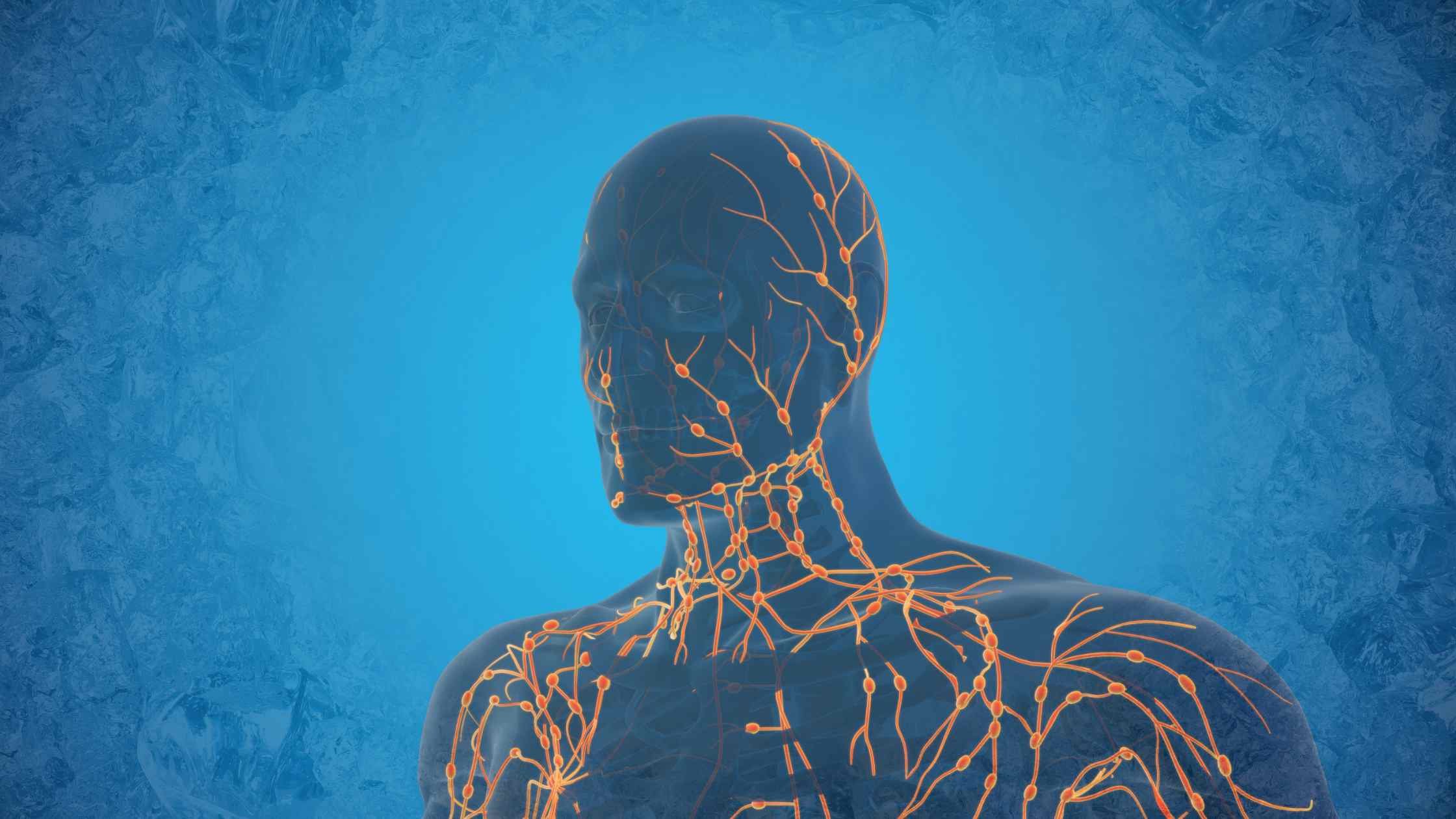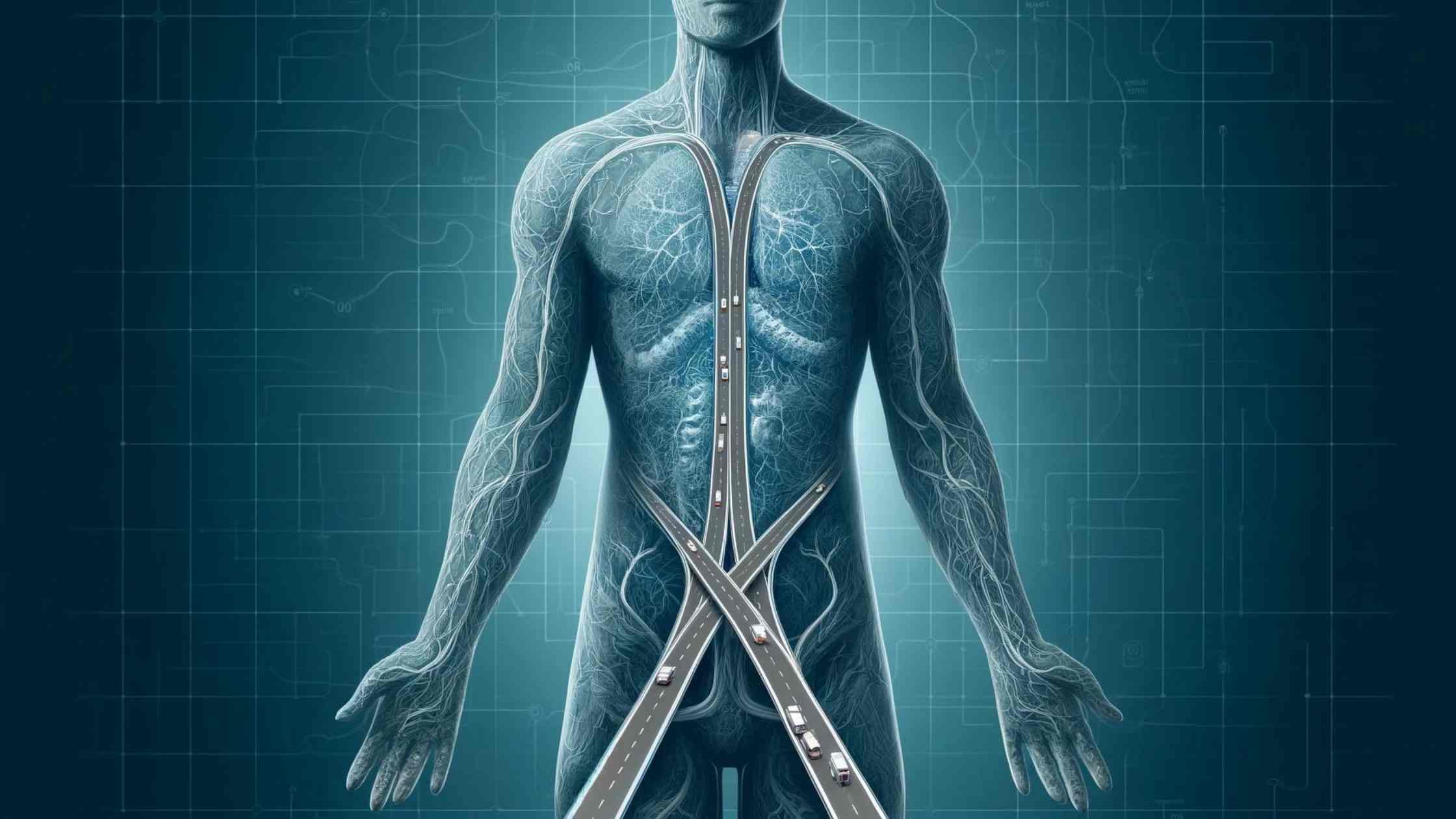What Cold Therapy Does for the Lymphatic System
The humble ice bath does more than just make you shiver, and there’s definitely more to the health ritual than most like to attribute. This brief exposure to extremely cold temperatures, while commonly associated with sports medicine and aiding recovery post-exercise, cold therapy also offers significant benefits for the lymphatic system.
The truth is, taking the plunge into icey waters goes beyond the initial shock and the shivering; it taps into the deeper mechanisms of true wellness, that’s why we love it so much.
This article will explore the advantages of ice baths for the lymphatic system, detailing how these moments of cold exposure can significantly enhance immune functionality and fluid regulation. Let’s delve into the science behind cold therapy and its impact on our body’s internal maintenance system.
What is the Lymphatic System?
The lymphatic system is a crucial component of the body's immune system, composed of lymph nodes, lymph vessels, and organs that produce and store cells that help fight infection and disease. It plays a pivotal role in fluid balance, waste removal, and immune responses.
I like to think of the lymphatic system as a bustling highway system. This network, much like a series of roads and highways, is responsible for transporting not passengers, but lymph—a clear fluid that contains nutrients and waste products between body tissues and the bloodstream.
Read Also: What Is Mouth Taping and is it Worth it For Sleep, Performance and Recovery?
The lymph vessels serve as the roads, providing routes for the lymph to travel. Lymph nodes are like checkpoints or toll booths scattered along these highways. At these checkpoints, the lymph is inspected and cleansed of harmful substances such as bacteria and viruses. This is akin to vehicles being checked at toll booths to ensure they are not carrying anything harmful that could affect the safety and health of the city.
This system also helps regulate traffic flow—ensuring that fluid levels in the body stay balanced, much like traffic officers manage flow to prevent road congestion. If there were blockages in the lymphatic highways (similar to road closures or traffic jams), it would lead to swelling and accumulation of fluid in parts of the body, much like traffic build-up leads to congestion and delays.
Overall, just as a well-maintained and efficiently managed highway system is crucial for keeping a city running smoothly, a healthy lymphatic system is vital for maintaining fluid balance, defending against infections, and ensuring the proper functioning of the body.
The Impact of Cold Therapy on the Lymphatic System
1. Enhanced Lymphatic Circulation
Exposure to cold causes lymph vessels to contract, which is thought to help move lymph fluid more effectively throughout the body. This can accelerate the removal of waste products and improve overall immune function.
Research indicates that specific cold therapy modalities can enhance the function of the lymphatic system by promoting the flow of lymph (Schander et al., 2013). The study observed significant increases in lymph flow and immune cell activity following repeated lymphatic pump treatments, demonstrating cold therapy's potential to enhance lymphatic circulation.
Read Also: Ice Bath Benefits for Skin
2. Reduction of Lymphedema
Lymphedema is characterised by swelling due to the accumulation of lymph fluid, often resulting from a compromised lymphatic system.
Cold therapy has been shown to alleviate the symptoms of lymphedema by reducing limb volume and discomfort. The systematic review by Hill et al. (2023) emphasises that cold therapy is effective in managing lymphedema, providing a non-invasive treatment option that can significantly improve patient outcomes.
The review found reductions in limb volume and noted minimal adverse events, underscoring the therapy's safety and efficacy.
3. Reduction in Inflammation
Cold therapy is well-known for its anti-inflammatory effects, which are beneficial in treating various conditions, including those affecting the lymphatic system.
By reducing inflammation, cold therapy can decrease swelling and pain, facilitating a quicker recovery process.
This anti-inflammatory response is also linked to a decrease in pro-inflammatory cytokines, as detailed in studies where cold therapy has mitigated inflammatory symptoms and enhanced tissue healing.
4. Modulation of Immune Responses
There is a growing body of evidence suggesting that cold therapy may also modulate immune responses, potentially providing benefits in cancer treatment and immune system disorders. Shevchuk and Radoja (2007) proposed that repeated cold stress could stimulate anti-tumour immunity, enhancing the activity of cytotoxic T lymphocytes and natural killer cells.
This modulation of the immune system could potentially be harnessed as an adjunct therapy in oncology, where improving the body's natural defence mechanisms can play a crucial role in combating cancer.
Supercharging the Lymphatic System With Contrast Therapy
Contrast therapy, which alternates between hot and cold treatments, can be highly effective in promoting lymphatic drainage. Here's how the two temperatures work together to enhance this process:
Heat Therapy
Heat therapy like using heated water baths, saunas or infrared saunas can benefit the lymphatic system by:
Vasodilation: Applying heat causes blood vessels to dilate (expand). This increase in vessel diameter enhances blood flow, which can help bring nutrients to tissues and support the removal of waste products more efficiently.
Increased Fluid Movement: Heat helps to increase the fluidity of lymph, making it easier to move through the lymphatic system. This reduces the viscosity of lymph, allowing it to flow more freely and effectively.
Relaxation of Tissues: Heat relaxes the surrounding tissues and muscles, which can reduce any pressure on the lymph vessels, allowing for a smoother flow of lymph.
Cold Therapy
Cold therapy through cold water immersion, supports lymphatic drainage through different mechanisms:
Vasoconstriction: Cold causes blood vessels to constrict (narrow). This can reduce inflammation and swelling by decreasing the flow of fluid into tissues, thus minimizing the lymphatic load that needs to be processed.
Reducing Fluid Leakage: By narrowing the vessels, cold therapy can help prevent excessive fluid from leaking into interstitial spaces. This makes it easier for the lymphatic system to manage fluid levels within the body.
Stimulation of Lymphatic Activity: The application of cold can stimulate the lymphatic system directly, encouraging it to pump and drain lymph fluid more efficiently.
Contrast Therapy: Combining Heat and Cold
Contrast therapy maximises the benefits of both heat and cold for the lymphatic system by:
Cycling of Blood Flow: Alternating between heat (vasodilation) and cold (vasoconstriction) creates a pump-like effect in the blood vessels and lymphatic system. This dynamic change in vessel diameter helps push lymph through the system, enhancing the removal of waste products and reducing stagnation.
Increased Metabolic Activity: The alternation between expanding and constricting blood vessels can also increase the metabolic rate of the surrounding tissues. This heightened activity helps the body process and remove metabolic wastes more effectively.
Optimised Fluid Handling: By regularly changing from hot to cold, contrast therapy helps balance the fluid intake and drainage in tissues, optimizing the conditions for lymphatic drainage without overwhelming the system.
Doing a few rounds of hot and cold therapy in a sauna and ice bath is something you can almost instantly feel the lymphatic effects of. People often notice that light and clean feeling after cycling from hot to cold, which causes big shifts and physiological responses that leave you feeling invigorated and cleansed.
Contrast heat and cold therapy provide a complementary approach that enhances lymphatic function by using the physiological responses of the body’s tissues and vessels to temperature changes. This method is particularly beneficial for reducing swelling, speeding up recovery from injuries, and improving overall circulation within the lymphatic system.
Clinical and Therapeutic Implications
The clinical applications of cold therapy in the management of lymphatic and immune-related conditions are extensive. It offers a promising avenue for non-pharmacological intervention that can be integrated into various treatment protocols, enhancing patient care without the significant side effects associated with some conventional therapies.
Frequently Asked Questions (FAQs)
Q1: What is cold therapy? Cold therapy, or cryotherapy, involves exposing the body to extremely cold temperatures for therapeutic purposes. It can be applied through various methods, including ice packs, coolant sprays, ice baths, and whole-body cryotherapy chambers.
Q2: How does cold therapy benefit the lymphatic system? Cold therapy helps stimulate the lymphatic system by causing the lymph vessels to contract, which promotes the flow of lymph throughout the body. This enhanced circulation helps in the efficient removal of waste products and supports immune function. Studies, such as those by Schander et al. (2013), have shown that lymphatic pump treatments can significantly increase lymph flow and immune cell activity (Schander et al., 2013).
Q3: Can cold therapy reduce lymphedema? Yes, cold therapy has been shown to effectively reduce the volume of lymphedema, a condition characterised by swelling due to fluid retention in the lymphatic system. A systematic review by Hill et al. (2023) reported that cold therapy can significantly decrease limb volume in individuals with lymphedema, suggesting it as a viable non-invasive treatment option (Hill et al., 2023).
Q4: Does cold therapy have any anti-inflammatory effects? Cold therapy is known for its anti-inflammatory properties. It helps reduce inflammation by decreasing the temperature of the affected area, which can slow down the metabolic rate and the activity of enzymes that contribute to inflammation. This can result in reduced swelling and pain, aiding in quicker recovery and healing.
Q5: How does cold therapy affect immune function? Cold therapy may modulate immune responses, potentially enhancing the body’s defence mechanisms. It has been hypothesised to stimulate anti-tumour immunity by activating cytotoxic T lymphocytes and natural killer cells, which are critical for controlling tumour growth and infections.
Q6: Is cold therapy safe for everyone? While cold therapy is generally safe, it may not be suitable for everyone. Individuals with conditions such as cardiovascular disease, high blood pressure, or severe diabetes should consult a healthcare provider before starting cold therapy. It’s also important to follow proper protocols and durations to avoid frostbite and other cold-related injuries.
Q7: How often can I use cold therapy for lymphatic health? The frequency of cold therapy can vary depending on individual health needs and the type of cryotherapy being used. For general wellness and lymphatic health, sessions might range from once a week to several times a week. It’s advisable to consult with a healthcare professional to establish a regimen that safely meets personal health goals.
Conclusion
Cold therapy provides multiple physiological benefits that can significantly impact the lymphatic and immune systems.
By enhancing lymph flow, reducing inflammation, and potentially modulating immune responses, cold therapy can play a crucial role in managing lymphatic system disorders and improving overall health.


